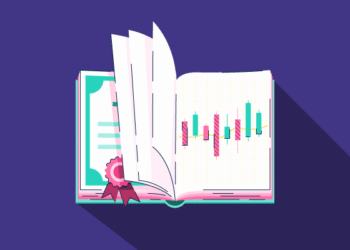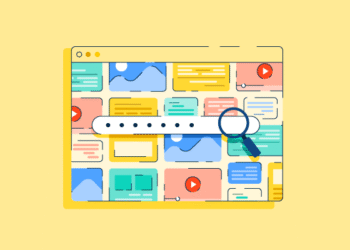Sell smart, win more. This is the approach high-performing B2B sales professionals embrace to stay ahead of the competition.
It’s not just about making more calls or sending more emails, though. Having the right strategies and technology in place is essential to driving real, impactful results.
As a senior research analyst at G2, focusing on B2B sales and marketing software, I am constantly aware of the trends and strategies of some of the top B2B sellers.
Taking this into account, here’s what I’ve observed top-performing B2B sellers on G2 are doing with buyer intent data to help proactively identify interested buyers before they contact sales professionals (or even their competitors).
Buyer behavior: What top B2B sellers know
According to G2’s 2025 Buyer Behavior Report, 57% of B2B software buyers globally anticipate their organization will spend more on tech and software over the next year. That’s an 8 percent point (ppt) increase in anticipated technology and software spending since last year.
Source: 2025 G2 Buyer Report
Why are organizations looking to invest more in their technology stack? Other than artificial intelligence (AI) being the dominant force (which I’ll get more into later) in driving an increase in the tech budget, organizations are also increasingly investing in technology or software to remain competitive or even keep pace in the rapidly changing B2B landscape, where buyers are in control.
With buyers taking more control of their buying journey, conducting self-serve research before they ever engage with a salesperson, the key opportunity is to engage them at the right moment, in the right place, with the evidence they need to move forward. According to the 2025 Buyer Behavior Report, two-thirds of buyers now prefer to engage with sales teams only after doing their own research.
Because of this, B2B sellers are leaning into analyzing buyer interest, understanding their buying journey, and engaging with personalized messages. Leading B2B sellers are refining their go-to-market (GTM) strategies to better engage with dynamic buyer personas, shifting sentiments, and evolving behaviors.
The power of buyer intent data
So, how are high-performing B2B companies adapting to evolving buyer behavior to better engage them and remain competitive?
One way is by driving smarter sales strategies using buyer intent signals, buyer behavior data, and brand credibility to close deals faster and more effectively. To understand how these B2B sellers leverage buyer intent data, we must first understand what buyer intent data is and how sellers can benefit from buyer activity insights.
Buyer intent is the likelihood that a customer will purchase, and there are tools and software products out there that can capture the research around actual buyer journeys and signs of their purchase intent. Buyer intent data can also help businesses understand what other products or integrations could be helpful to their customers to preemptively meet their needs. This data can come from multiple sources, including:
- First-party intent data: This includes information coming from interactions with a seller’s owned digital properties, like website visits, form submissions, and content downloads.
- Second-party intent data: This is the data gathered from a trusted partner who has collected it directly from their users and then shares it with other businesses through an agreement.
- Third-party intent data: Third-party intent data is sourced from external providers who aggregate user behavior across various websites, platforms, or other sources.
For example, G2 Buyer Intent data is second-party intent data that provides information about the software products and categories users are researching on their platform. It allows B2B sellers to market smarter with the right audience and win more deals. Some B2B sellers on G2 have even experienced 3x the conversions with G2 Buyer Intent data.
Also, buyer intent data providers aggregate and deliver signals that indicate when prospects and customers interact or engage with a product or service. These tools are primarily used by sales, marketing, and customer success teams. The table below highlights the top five industries most commonly represented by these teams or other users submitting reviews in the Buyer Intent Data Providers category.
Total # of buyer intent data providers product reviews by industry
|
Industry |
Survey response count |
|
Computer software |
2312 |
|
Information technology and services |
1650 |
|
Marketing and advertising |
577 |
|
Computer and network security |
267 |
|
Financial services |
249 |
As of June 2025, there are over 70 products in the Buyer Intent Data Providers category on G2 with a total of 7,914 reviews.
Source: 2025 G2 Buyer Report
As seen in the chart above, total reviews have increased 7.3% since the last fiscal year, which suggests increasing adoption of buyer intent data providers. This datapoint doesn’t come as a surprise, as the market for buyer intent data tools is experiencing significant growth, driven by meeting the increasing demands of customer preferences and targeting potential customers more effectively throughout their buyer journey.
Adopt a top B2B seller mindset: What you can do now
What do high-performing B2B sellers on G2 have in common? They demonstrate strengths in the following:
- Higher engagement with buyer intent signals
- Smarter outreach with more relevance and timing driven by intent data and buyer behavior insights on G2
- Increased alignment between sales and marketing around profile activity and interaction data
- Consistent investment in gathering and leveraging product reviews, earned badges, star ratings, and Grid® Reports
These sellers act with precision, using real-time data insights to drive results. Here are four key best practices you can adopt now to embrace this mindset:
- Focus on buyer intent, not just leads: Top sellers prioritize accounts showing actual buying behavior, not just those who fill out a form.
- Make every interaction data-driven: Leverage insights from your CRM, buyer intent data platforms, marketing engagement, and past buyer behavior to personalize outreach and add relevance at every touchpoint.
- Drive GTM alignment: Collaboration between sales and marketing is essential for sharing goals, data, and messaging to ensure a consistent buyer experience and a stronger pipeline.
- Utilize automation: Use tools to identify high-potential opportunities, predict next-best steps, and handle routine tasks automatically with AI sales assistants.
What’s next?
What’s next…or more like, what’s already here? You guessed right, the age of AI. B2B sellers and buyers alike need to prioritize AI as this is the new standard for automating workflows, personalizing engagement, and winning deals.
Buyers are relying on AI to streamline their decision-making process more quickly, instead of going through the traditional sales funnel to choose B2B software. Now, buyers are increasingly using AI tools to get faster, conversational answers about products and vendors, rather than manually searching for vendor websites and analyst reports. For example, G2.ai leverages the power of G2 marketplace data with AI to get instant, highly relevant software recommendations and answer the toughest buying questions.
On the other hand, B2B sellers need to adopt AI in their offerings (if they haven’t already) to remain leaders in their category or industry, as buyers are increasingly investing in software that clearly showcases the value and advantages of AI-driven capabilities.
AI accelerates the sales process by rapidly converting real-time data into actionable insights, reducing guesswork and eliminating wasted effort. In today’s landscape, selling smarter truly begins with AI.
To learn more, read G2’s latest Insights Report: AI’s Impact on Sales: Smarter GTM Motions for Lasting Customer Connection.



![How AI Chat is Rewriting B2B Software Buying [Insights From 1,000+ Decision Makers]](https://mgrowtech.com/wp-content/uploads/2025/10/dark-17-350x250.png)













